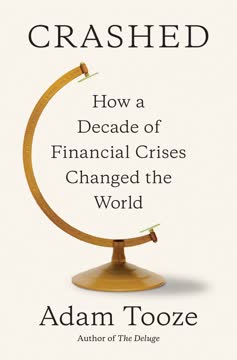Key Takeaways
1. The 2008 Crisis Was Not Just American, But Deeply Global and North Atlantic.
the simple idea, the idea that was so prevalent in 2008, the idea that this was basically an American crisis, or even an Anglo-Saxon crisis, and as such a key moment in the demise of American unipolar power, is in fact deeply misleading.
Beyond American shores. While the crisis originated in the US housing market, it was fundamentally global, particularly North Atlantic, in its genesis and spread. European banks were deeply entangled in the US financial system.
- European banks were major holders of US mortgage-backed securities.
- They dominated the market for asset-backed commercial paper (ABCP), a key funding source.
- The City of London served as a crucial hub for offshore dollar finance.
Interconnectedness revealed. The crisis exposed the profound financial links between the US and Europe, showing that problems in one region could rapidly cascade to the other. This challenged the notion of distinct national or regional crises.
Misdirected blame. Focusing solely on the US as the source of the crisis obscured the reality of this deep interdependence and misdirected criticism away from the global nature of financial excess and regulatory failures.
2. The Spark Was the US Housing Market, Fueled by New Financial Engineering.
Ground zero was America’s housing market, for sure.
Housing as collateral. US real estate, the largest single form of wealth, became the foundation for a massive expansion of mortgage debt. Fluctuations in house prices were amplified by this debt, linking the housing cycle to financial stability.
- 70% of US households owned homes by 2008.
- US home prices nearly doubled in the decade before 2006.
- This added $6.5 trillion to household wealth, boosting global demand.
Securitization and risk. The securitization of mortgages, packaging them into tradable securities (MBS), allowed risks to be spread but also created complex, opaque instruments.
- MBS were tranched into different risk tiers (CDOs, CDO-squared).
- Ratings agencies often gave high ratings (AAA) to risky tranches.
- This created perverse incentives, prioritizing volume and fees over loan quality.
The subprime surge. From 2004, private lenders aggressively pushed into unconventional lending (subprime, Alt-A).
- By 2006, 70% of new mortgages were subprime or unconventional.
- These loans were often high-risk, with incomplete documentation or interest-only terms.
3. The Transatlantic Connection Created a Vast, Interconnected System Beyond National Control.
the crisis was not merely American but global and, above all, North Atlantic in its genesis.
European entanglement. European banks were not just passive investors; they actively participated in the US mortgage boom.
- They sponsored two-thirds of ABCP conduits globally.
- German Landesbanken, French, Dutch, and British banks were heavily involved.
- Some European banks bought US mortgage originators.
Borrowing dollars to lend dollars. European banks funded their dollar-denominated assets (like US MBS) by borrowing in US wholesale money markets.
- They tapped money market funds (MMFs) and repo markets.
- This created large, multicurrency balance sheets with maturity mismatches.
London's central role. The City of London was a key hub for this transatlantic finance, facilitating offshore dollar trading and complex derivatives.
- London was the largest center for foreign exchange and OTC derivatives trading.
- UK deregulation (Big Bang) and US deregulation (1999 Act) fueled competitive liberalization.
- European banks acquired British and American investment banks.
4. The Eurozone's Hidden Fragility (Beyond Public Debt).
the eurozone crisis is not a separate and distinct event, but follows directly from the shock of 2008.
Not just sovereign debt. While the eurozone crisis was framed as a public debt issue (especially Greece), its roots lay in the same private credit boom that caused the US crisis.
- Cross-border bank lending within the eurozone exploded before 2008.
- Countries like Spain and Ireland experienced massive credit-fueled housing bubbles.
- This led to large private debt burdens, not primarily public debt booms.
Banking system vulnerability. Europe's banks were exceptionally large relative to their national economies and heavily reliant on volatile wholesale funding.
- European banks' liabilities were often 300-700% of national GDP.
- They had significant exposure to US dollar funding markets.
- They also had large cross-border exposures within the eurozone.
Lack of a financial fire department. The eurozone lacked unified banking supervision, deposit insurance, or a common resolution fund.
- This left national governments responsible for bailing out oversized banks.
- The crisis exposed the dangerous gap between monetary union and the absence of a banking union.
5. Multipolarity and Geopolitical Tensions (Russia, China, Eastern Europe).
by the vigor of their reactions, emerging market governments spectacularly confirmed the reality of multipolarity.
Emerging market resilience. Unlike in the 1990s, many emerging markets had built reserves and adopted tighter fiscal policies, allowing them to weather the 2008 storm without IMF bailouts.
- China's massive stimulus was a key example.
- South Korea and Russia also deployed significant resources.
Russia's resurgence. Fueled by commodity prices, Russia recovered from the 1998 crisis and asserted itself geopolitically.
- Putin challenged US unilateralism and NATO expansion.
- Russia's intervention in Georgia (2008) highlighted rising tensions.
Eastern Europe's vulnerability. Despite EU/NATO integration, Eastern Europe was hit hard due to financial entanglement with Western banks and reliance on foreign currency loans.
- Countries like Latvia faced severe recessions and currency pressure.
- Western European banks had significant exposure to the region.
- The crisis exposed the limits of EU/NATO integration as a shield against financial shocks.
6. The Global Financial Meltdown (Lehman, Panic).
Never before, not even in the 1930s, had such a large and interconnected system come so close to total implosion.
Funding markets freeze. The crisis escalated dramatically in 2008 as key wholesale funding markets seized up.
- ABCP markets collapsed in August 2007.
- Repo markets, including those for highly rated collateral, came under severe pressure.
- Money market funds faced runs.
Lehman's fall. The bankruptcy of Lehman Brothers in September 2008 was a pivotal moment, triggering a cascade of failures and panic.
- Lehman was heavily reliant on repo funding.
- Its failure led to a loss of confidence across the financial system.
Contagion spreads. The panic rapidly spread from investment banks to insurers (AIG) and commercial banks.
- AIG faced massive collateral calls on its derivatives and securities lending.
- The crisis threatened major European banks heavily reliant on dollar funding.
7. Crisis Demanded Massive State Intervention, Revealing the Political Nature of Money.
we lived in an age not of limited but of big government, of massive executive action, of interventionism that had more in common with military operations or emergency medicine than with law-bound governance.
Unprecedented scale. States intervened on a scale unseen outside wartime to prevent the collapse of the financial system.
- Bailouts involved trillions of dollars in loans, guarantees, and capital injections.
- Measures included nationalizations (Northern Rock, RBS, Hypo), brokered takeovers (Bear Stearns, Merrill Lynch), and asset purchases.
Beyond market logic. The interventions violated free-market principles and revealed that the stability of the modern monetary system is fundamentally political.
- The state acted as a backstop when markets failed.
- Decisions were often improvised and lacked clear legal basis initially.
Political fallout. The bailouts were deeply unpopular and exposed the close ties between government and finance.
- They exacerbated political divisions (e.g., within the US Republican Party).
- They fueled public anger over the perceived unfairness of rescuing banks while ordinary citizens suffered.
8. The US Federal Reserve Became the Indispensable Global Lender of Last Resort.
It established itself as liquidity provider of last resort to the global banking system.
Dollar shortage. European banks faced a critical shortage of dollar funding as US money markets froze.
- Their dollar liabilities (borrowing) far exceeded their dollar assets (lending).
- Their own central banks lacked sufficient dollar reserves.
Swap lines. The Fed responded by creating and expanding currency swap lines with other central banks, primarily in Europe.
- This allowed central banks like the ECB and Bank of England to access trillions of dollars.
- They then channeled these dollars to their domestic banks.
Unprecedented scale and scope. The Fed's liquidity operations were massive and extended well beyond US borders.
- Programs like TAF, ST OMO, PDCF, and CPFF provided trillions in funding.
- A significant portion of this funding went to foreign banks.
- QE also involved purchasing assets from foreign banks.
Hidden power. These crucial interventions were largely kept out of public view, highlighting the opaque nature of central bank power and the hierarchical structure of the global dollar system.
9. China's Stimulus Was World Historic, Accelerating the Shift to Asia.
China’s response to the financial crisis it imported from the West was of world historic proportions, dramatically accelerating the shift in the global balance of economic activity toward East Asia.
Massive scale. China launched a 4 trillion yuan ($586 billion) stimulus package, equivalent to 12.5% of its 2008 GDP.
- This was combined with a huge expansion of bank lending.
- Total stimulus reached nearly 20% of GDP in 2009.
Investment-driven. The stimulus primarily fueled infrastructure and heavy industry investment, leveraging the power of state-owned enterprises and local governments.
- High-speed rail construction was a major focus.
- This reinforced China's existing growth model, despite concerns about imbalances.
Global impact. China's stimulus was the main engine of global growth in 2009, offsetting the collapse in demand elsewhere.
- It boosted commodity prices and trade, benefiting exporters worldwide.
- This solidified China's position as a global economic powerhouse.
10. Europe's Response Was Painfully Slow and Self-Inflicted, Leading to Disaster.
the contrast between the relatively effective containment of the global meltdown in 2008... and the spiraling disaster of the eurozone... is painful.
National silos. Despite deep financial integration, Europe's initial response was fragmented and national.
- Germany vetoed early proposals for a common European bailout fund.
- Ireland's unilateral guarantee of bank liabilities created a massive fiscal burden.
Austerity over stimulus. While the US and China deployed large stimulus packages, Europe's fiscal response was modest and quickly shifted to austerity.
- Germany's commitment to a constitutional debt brake influenced the eurozone agenda.
- This contributed to a prolonged recession and high unemployment.
Doom loop. The failure to recapitalize banks adequately and the insistence on national responsibility created a vicious cycle between weak banks and vulnerable sovereigns.
- Banks loaded up on national debt (LTRO).
- Rising sovereign yields impaired bank balance sheets, requiring bailouts that burdened the state.
11. The Financial Crisis Morphed into a Comprehensive Political and Geopolitical Upheaval.
the financial and economic crisis of 2007–2012 morphed between 2013 and 2017 into a comprehensive political and geopolitical crisis of the post–cold war order.
Political polarization. The crisis exacerbated existing political divisions and fueled anti-establishment sentiment.
- In the US, it fractured the Republican Party and contributed to the rise of the Tea Party and Trump.
- In Europe, it led to the rise of populist and nationalist parties on both the left and right.
Geopolitical tensions. The crisis unfolded against a backdrop of rising multipolarity and renewed great power competition.
- Russia's assertion of power in Georgia (2008) and Ukraine (2014) clashed with Western expansion.
- China's economic rise challenged the existing global order.
Crisis of legitimacy. The perceived failure of mainstream elites to prevent or adequately respond to the crisis undermined trust in established institutions and norms.
- The bailouts fueled anger over inequality and the influence of finance.
- Austerity policies led to widespread protests and social unrest.
12. The Crisis Revealed Deep-Seated Problems and the Next Challenges Are Already Here.
the next moments of economic challenge and crisis are already upon us, not in America or in Europe but in Asia and the emerging markets.
Enduring imbalances. Despite crisis management, fundamental imbalances in the global economy persist.
- Chronic trade surpluses (Germany, China) and deficits (US) remain.
- The global financial system remains heavily reliant on the dollar.
New vulnerabilities. The crisis response created new risks and challenges.
- Massive public debt burdens in advanced economies.
- Overreliance on unconventional monetary policies (QE).
- Vulnerabilities in emerging markets exposed by the taper tantrum.
Political fragmentation. The crisis has left a legacy of political instability and fragmentation in many countries.
- Mainstream parties have been weakened.
- Nationalist and anti-globalization sentiments are on the rise.
Future shocks. The global economy remains susceptible to new crises, potentially originating in areas like China's financial system or geopolitical flashpoints.
Last updated:
FAQ
What is Crashed: How a Decade of Financial Crises Changed the World by Adam Tooze about?
- Comprehensive global crisis history: The book provides an authoritative narrative of the 2007–2009 global financial crisis, tracing its origins, development, and worldwide consequences across the US, Europe, China, and emerging markets.
- Interconnected financial and political analysis: Adam Tooze explores not just the economic mechanisms but also the political, social, and geopolitical dimensions, showing how the crisis reshaped global power and governance.
- Long-term impact: The book situates the crisis within a broader historical context, examining its effects on inequality, political polarization, and the rise of populism and nationalism.
Why should I read Crashed by Adam Tooze?
- In-depth, interdisciplinary insight: Tooze combines economics, history, and political science to offer a nuanced understanding of the crisis and its aftermath, making it valuable for both experts and general readers.
- Global perspective: Unlike many accounts, the book treats the crisis as a worldwide event, connecting developments in the US, Europe, China, and beyond.
- Relevance to current events: The analysis helps readers understand ongoing issues like Brexit, the rise of Trump, and the challenges facing global economic governance.
What are the key takeaways of Crashed by Adam Tooze?
- Financial crises are global: The 2007–2009 crisis was a systemic failure involving interconnected financial systems, not just a US housing bubble.
- Political choices matter: Crisis management depended on political leadership and coalitions, with decisions like bailouts and ECB interventions shaping outcomes.
- Inequality and polarization: The crisis deepened economic disparities and undermined trust in traditional parties, fueling populist movements and challenging democratic capitalism.
- Limits of global governance: The crisis exposed the fragility of international institutions and the difficulties of coordinated responses in a multipolar world.
How does Adam Tooze explain the causes and unfolding of the 2007–2009 financial crisis in Crashed?
- Shadow banking collapse: The failure of key components like repo markets, asset-backed commercial paper, and credit default swaps triggered a loss of confidence and liquidity.
- Excessive leverage and risky bets: Investment banks and European institutions took on huge risks, relying on short-term funding that evaporated during the crisis.
- Global dollar shortage: European banks faced severe dollar funding shortages, which the Federal Reserve addressed through unprecedented swap lines.
- Systemic interconnectedness: The crisis quickly spread across borders due to the deep integration of global finance.
What role did the Federal Reserve play during the global financial crisis according to Crashed by Adam Tooze?
- Global lender of last resort: The Fed provided trillions in liquidity to both US and foreign banks via currency swap lines, stabilizing the dollar-based global system.
- Innovative crisis management: It created emergency facilities and implemented unconventional policies like quantitative easing to prevent systemic collapse.
- Political and legitimacy challenges: The Fed’s actions, often conducted with limited transparency, raised questions about democratic accountability and the concentration of financial power.
How does Crashed by Adam Tooze describe the eurozone crisis and its connection to the 2008 financial crisis?
- Direct aftershock: The eurozone crisis was a delayed consequence of the 2008 meltdown, rooted in the fragility of European banks and their funding structures.
- Structural weaknesses: The eurozone’s design lacked mechanisms to handle banking and sovereign debt crises, leading to a “doom loop” between banks and states.
- Austerity and political fallout: The response emphasized fiscal discipline, deepening recessions in peripheral countries and fueling political unrest and populism.
What is the significance of the dollar and the global financial system in Crashed by Adam Tooze?
- Dollar as global anchor: The US dollar remains central to global trade and finance, with many currencies pegged to it and international transactions denominated in dollars.
- Fed’s pivotal role: The Federal Reserve’s willingness to provide dollar liquidity worldwide was crucial in containing the crisis and stabilizing markets.
- Political implications: The book highlights the political nature of global finance, as the Fed’s actions had far-reaching consequences for democratic accountability and international relations.
How does Adam Tooze explain the rise of political populism and nationalism after the financial crisis in Crashed?
- Economic dislocation and inequality: The crisis exposed and worsened deep inequalities, especially among working-class and rural populations, fueling social despair.
- Political realignment: Disillusionment with traditional parties led to the rise of populist and nationalist movements in the US and Europe, challenging the established order.
- Crisis of governance: Dysfunctional institutions and partisan deadlock undermined trust in democracy and contributed to anti-establishment sentiments.
What is the “secular stagnation” thesis discussed in Crashed by Adam Tooze?
- Chronic demand shortfall: Larry Summers’ “secular stagnation” thesis argues that the US and other advanced economies face persistently low growth due to insufficient demand for investment relative to savings.
- Policy implications: Traditional monetary policy and short-term stimulus are inadequate; sustained public investment and government activism are needed to boost growth.
- Historical context: The thesis challenges the assumption of natural economic rebound, suggesting that recent growth depended on financial bubbles rather than healthy fundamentals.
How does Crashed by Adam Tooze analyze the role of China in the global economy post-2008?
- Anchor of globalization: China emerged as a stabilizing force and major voice in global economic governance, especially after its massive stimulus in 2008–2009.
- Financial vulnerabilities: Despite growth, China faced internal risks like overcapacity, shadow banking, and capital flight, culminating in the 2015 yuan panic.
- Interdependence with the US: China’s financial stability became increasingly tied to US monetary policy, with Fed decisions impacting China’s currency and capital flows.
What are the main critiques of economic policy and regulation in Crashed by Adam Tooze?
- Regulatory failures: Policymakers and regulators failed to recognize the risks in the new market-based banking model and shadow banking system.
- Deregulation and oversight gaps: Deregulation, reliance on private risk models, and inadequate supervision encouraged excessive leverage and risk-taking.
- Political taboos: There was reluctance to confront the dangers of financial innovation, with warnings dismissed as politically inconvenient or “Luddite.”
What are some of the best quotes from Crashed by Adam Tooze and what do they mean?
- “We do regime change better than the Americans.” Reflects the view that Germany orchestrated political changes in Greece and Italy to enforce fiscal discipline, highlighting the political nature of the crisis.
- “The crisis will not be solved all in one go, [and] it is certain that it will take us a decade to get back to a better position.” Angela Merkel’s statement underscores the long-term, incremental approach to the eurozone crisis.
- “Within our mandate, the ECB is ready to do whatever it takes to preserve the euro.” Mario Draghi’s pledge marked a turning point, signaling the ECB’s commitment to maintaining the eurozone’s integrity and calming markets.
Review Summary
Crashed: How a Decade of Financial Crises Changed the World is praised as a comprehensive, insightful analysis of the 2008 financial crisis and its global repercussions. Readers appreciate Tooze's detailed examination of economic, political, and geopolitical factors, though some find the technical jargon challenging. The book's global perspective and exploration of interconnected markets are highlighted as strengths. While some reviewers note its density and length, many consider it essential reading for understanding contemporary political economy and the events that shaped the past decade.
Similar Books
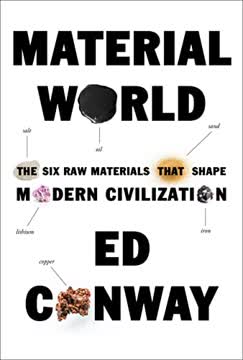
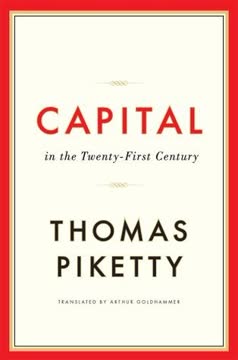
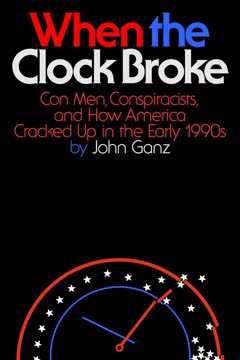
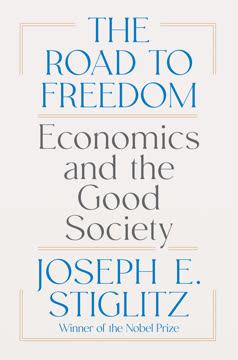
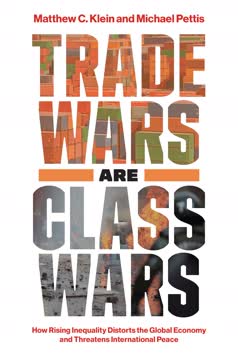

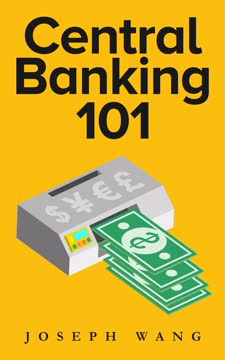
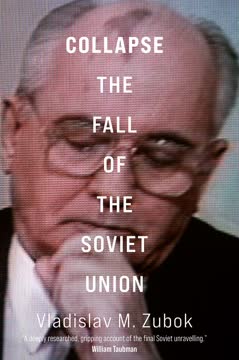
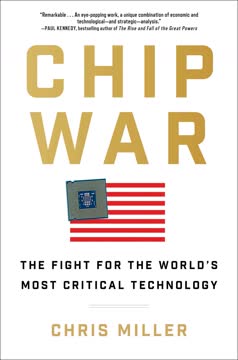

Download PDF
Download EPUB
.epub digital book format is ideal for reading ebooks on phones, tablets, and e-readers.
